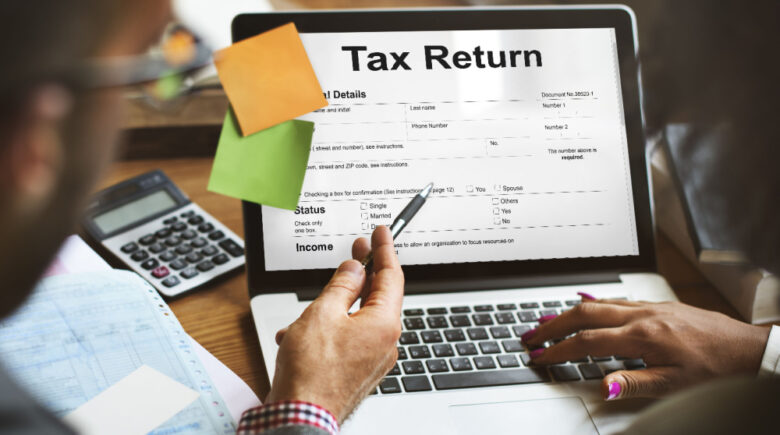The tax industry is busiest between late January and mid-April, and it seems the government changes the rules each time. There are new rules to remember and new ways to earn a bigger refund or owe less money. We discuss everything you need to know about the tax season to get you prepared. The new tax rules for the 2024 tax filing season (2023 tax year) are:
Standard Deduction Tax Bracket
The IRS believes that about 90% of taxpayers choose the standard deduction. The standard deduction tax bracket for 2023 has changed due to rising inflation. Deductions for married filing separately and single taxpayers rose from $12,950 to $13,850. Qualifying widows and married taxpayers combining their tax returns into one form (filing jointly) went from $25,900 to $27,700. The head of household, or the leader of the house, will get $20,800, a $1,400 bump from last year’s $19,400. Higher deductions mean lower taxes.e
Blind taxpayers or people 65 and older get a usual increase from the standard deduction. This year, the increase they get rose from 2022 taxes. If these people are single or the head of household, it goes up $1,000 from last year to earn $1,850. There is also a $1,500 increase if those people are married or widowed.
Income Tax Bracket
When standard deductions change, the income tax brackets adjust due to inflation, too. The tax brackets have seven percentages to go by, and it’s easy to assume that the top percentage matching your income is the one that taxes the entire amount. Not so. The percentages match the money that will be taxed, mimicking a tiered system.
Ten percent is for the first $11,000 earned for single filers and the first $22,000 for married joint filers in 2023. In 2022, 10% was for the first $10,275 in single households and $20,550 for married couples filing jointly. The high deduction aims for a smaller tax bill and a larger refund.
Energy Tax Credits
The 2022 Inflation Reduction Act includes vehicles purchased and home improvements made during the year 2023. If it does, you may qualify for energy tax credits. You can claim a clean vehicle tax credit of up to $7,500 for electric or clean qualifying vehicles. Used electric vehicle buyers claim a separate credit. It is the lesser of two choices: 30% of the sale price or $4,000.
Meanwhile, energy-efficient home improvements must be eligible for eco-friendly additions. If they are, you can claim the energy-efficient home improvement credit. While you will no longer get $500 in lifetime credit, you will get up to 30% off the item, translating to up to $1,200 in savings. If your energy add-on was a heat pump, biomass stove, or biomass boiler, you may get up to $2,000.
The solar energy tax credit that went into effect in 2022 will stay in effect for the next ten years. So, 2023 is the second of ten years to collect credits for solar-powered residential items like solar panels and water heaters. The change is that the amount to claim increased from last year to 30%. Look for the residential clean energy credit on the tax form to claim it.
The 1099-K Delay
Freelancers and independent contractors working with a W9 usually get a 1099 when they earn $600 or more in one year. That was the year when online payment service apps like PayPal, Etsy, AirBnb, Venmo, and Payoneer were to send 1099-K forms. However, the IRS delayed this requirement due to feedback from taxpayers, tax professionals, and payment processors. There was too much confusion surrounding the forms and tax obligations for the person receiving them. Therefore, the usual $20,000+ a year and over 200 transactions threshold remain for 2023. The IRS treats 2023 as a transition year, like last year.
The 2024 tax returns will not use the $600 limit either. There will be an in-between threshold of $5,000 to help taxpayers transition. That will go into effect in January 2025.
Retirement Plan Tweaks
Contributions and distributions related to the retirement plan are eligible. Retirement contributions are $22,500 max for people under 50 and $30,000 for people over 50 in 2023 401(k) plans. The IRA and traditional retirement plans have a maximum of $6,500 for people under 50 and $7,500 for people over 50.
Retirement plan distributions only count for natural disasters. If you take money out of your retirement plan, you only get coverage for up to $22,000 in eligible retirement plans without penalty. However, you have three years to pay taxes on the money withdrawn from the account.
Student Loan Interest Payments
The pandemic stopped student loan repayments temporarily, and there were pleas for student loan forgiveness with government loans. However, monthly repayments of student loans did return in the fall of 2023. The money you did pay during the late parts of the year qualifies for a tax deduction. Any interest paid on student loans is eligible for a student loan deduction on your tax return.
ACA Marketplace
If you purchased health insurance through the healthcare.gov ACA marketplace, you got a tax credit in the past. What changed this year is that more people can claim the Premium Tax Credit and get more for doing so. Eligible taxpayers must have a yearly household income 400% above the poverty level.
For example, the yearly poverty level in the 48 states for a family of four is $30,000. It’s $37,500 for an Alaskan family of four and $34,500 in Hawaii. Four hundred percent above that would be a maximum of $120,000 in the 48, $150,000 in Alaska, and $138,000 in Hawaii. Meanwhile, lower premiums of 8.5% or lower income contributions are the reason for more credit on the tax return.
It’s a lot to remember, but you don’t have to navigate these waters alone. There are tax professionals at tax companies and accounting firms who know the new rules and know the best ways to maximize your return. There are tax filing software and websites that break down complicated matters into simple questions. Tax attorneys can help you, too. Now that you know the new tax information, you can gather and organize your paperwork and nail tax season with less stress.
The tax industry is busiest between late January and mid-April, and it seems the government changes the rules each time. There are new rules to remember and new ways to earn a bigger refund or owe less money. We discuss everything you need to know about the tax season to get you prepared. The new tax rules for the 2024 tax filing season (2023 tax year) are:
Standard Deduction Tax Bracket
The IRS believes that about 90% of taxpayers choose the standard deduction. The standard deduction tax bracket for 2023 has changed due to rising inflation. Deductions for married filing separately and single taxpayers rose from $12,950 to $13,850. Qualifying widows and married taxpayers combining their tax returns into one form (filing jointly) went from $25,900 to $27,700. The head of household, or the leader of the house, will get $20,800, a $1,400 bump from last year’s $19,400. Higher deductions mean lower taxes.e
Blind taxpayers or people 65 and older get a usual increase from the standard deduction. This year, the increase they get rose from 2022 taxes. If these people are single or the head of household, it goes up $1,000 from last year to earn $1,850. There is also a $1,500 increase if those people are married or widowed.
Income Tax Bracket
When standard deductions change, the income tax brackets adjust due to inflation, too. The tax brackets have seven percentages to go by, and it’s easy to assume that the top percentage matching your income is the one that taxes the entire amount. Not so. The percentages match the money that will be taxed, mimicking a tiered system.
Ten percent is for the first $11,000 earned for single filers and the first $22,000 for married joint filers in 2023. In 2022, 10% was for the first $10,275 in single households and $20,550 for married couples filing jointly. The high deduction aims for a smaller tax bill and a larger refund.
Energy Tax Credits
The 2022 Inflation Reduction Act includes vehicles purchased and home improvements made during the year 2023. If it does, you may qualify for energy tax credits. You can claim a clean vehicle tax credit of up to $7,500 for electric or clean qualifying vehicles. Used electric vehicle buyers claim a separate credit. It is the lesser of two choices: 30% of the sale price or $4,000.
Meanwhile, energy-efficient home improvements must be eligible for eco-friendly additions. If they are, you can claim the energy-efficient home improvement credit. While you will no longer get $500 in lifetime credit, you will get up to 30% off the item, translating to up to $1,200 in savings. If your energy add-on was a heat pump, biomass stove, or biomass boiler, you may get up to $2,000.
The solar energy tax credit that went into effect in 2022 will stay in effect for the next ten years. So, 2023 is the second of ten years to collect credits for solar-powered residential items like solar panels and water heaters. The change is that the amount to claim increased from last year to 30%. Look for the residential clean energy credit on the tax form to claim it.
The 1099-K Delay
Freelancers and independent contractors working with a W9 usually get a 1099 when they earn $600 or more in one year. That was the year when online payment service apps like PayPal, Etsy, AirBnb, Venmo, and Payoneer were to send 1099-K forms. However, the IRS delayed this requirement due to feedback from taxpayers, tax professionals, and payment processors. There was too much confusion surrounding the forms and tax obligations for the person receiving them. Therefore, the usual $20,000+ a year and over 200 transactions threshold remain for 2023. The IRS treats 2023 as a transition year, like last year.
The 2024 tax returns will not use the $600 limit either. There will be an in-between threshold of $5,000 to help taxpayers transition. That will go into effect in January 2025.
Retirement Plan Tweaks
Contributions and distributions related to the retirement plan are eligible. Retirement contributions are $22,500 max for people under 50 and $30,000 for people over 50 in 2023 401(k) plans. The IRA and traditional retirement plans have a maximum of $6,500 for people under 50 and $7,500 for people over 50.
Retirement plan distributions only count for natural disasters. If you take money out of your retirement plan, you only get coverage for up to $22,000 in eligible retirement plans without penalty. However, you have three years to pay taxes on the money withdrawn from the account.
Student Loan Interest Payments
The pandemic stopped student loan repayments temporarily, and there were pleas for student loan forgiveness with government loans. However, monthly repayments of student loans did return in the fall of 2023. The money you did pay during the late parts of the year qualifies for a tax deduction. Any interest paid on student loans is eligible for a student loan deduction on your tax return.
ACA Marketplace
If you purchased health insurance through the healthcare.gov ACA marketplace, you got a tax credit in the past. What changed this year is that more people can claim the Premium Tax Credit and get more for doing so. Eligible taxpayers must have a yearly household income 400% above the poverty level.
For example, the yearly poverty level in the 48 states for a family of four is $30,000. It’s $37,500 for an Alaskan family of four and $34,500 in Hawaii. Four hundred percent above that would be a maximum of $120,000 in the 48, $150,000 in Alaska, and $138,000 in Hawaii. Meanwhile, lower premiums of 8.5% or lower income contributions are the reason for more credit on the tax return.
It’s a lot to remember, but you don’t have to navigate these waters alone. There are tax professionals at tax companies and accounting firms who know the new rules and know the best ways to maximize your return. There are tax filing software and websites that break down complicated matters into simple questions. Tax attorneys can help you, too. Now that you know the new tax information, you can gather and organize your paperwork and nail tax season with less stress.



